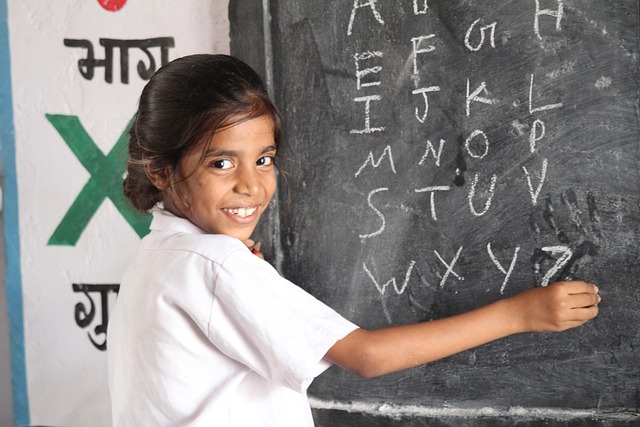2024年职称英语考试试题及答案-卫生类A

第二部分:阅读判断(第16~22题,每题1分,共7分)
下面的短文后列出了7个句子,请根据短文的内容对每个句子做出判断;如果该句提供的是正确信息,请选择A;如果该句提供的是错误信息,请选择B;如果该句的信息文中没有提及,请选择C。
The Mind-Body Connections
第二部分:阅读判断(第16~22题,每题1分,共7分)
下面的短文后列出了7个句子,请根据短文的内容对每个句子做出判断;如果该句提供的是正确信息,请选择A;如果该句提供的是错误信息,请选择B;如果该句的信息文中没有提及,请选择C。
The Mind-Body Connections
第三部分:概括大意和完成句子(第23~30题,每题1分,共8分)
下面的短文后有2项测试任务:(1)第23~26题要求从所给的6个选项中为指定段落每段选择1个小标题;(2)第27~30题要求从所给的6个选项中为每个句子确定一个最佳选项。
Multiple Sclerosis(多发性硬化症)
1 Multiple Sclerosis (MS) is a disease in which the patients immune(免疫的)system attacks the central nervous system. This can lead to numerous physical and mental symptoms, as the disease affects the transmission of electrical signals between the body and the brain. However, the human body, being a flexible, adaptable system, can compensate for some level of damage, so a person with MS can look and feel fine even though the disease is present.
2 MS patients can have one of two main varieties of the disease: the relapsing form (复发型)and the primary progressive form. In the relapsing form, the disease progresses in a series of jumps; at times it is in remission(减轻).which means that a persons normal functions return for a period of time before the system goes into relapse and the disease again becomes more active. This is the most common form of MS; 80-90% of people have this form of the disease when they are first diagnosed. The relapse-remission cycle can continue for many years. Eventually, however, Ioss of physical and cognitive functions starts to take place and the remissions become less frequent.
3 In the primary progressive form of MS, there are no remissions and a continual but steady loss of physical and cognitive functions takes place. This condition affects about 10-15% of sufferers at diagnosis.
4 The expected course of the disease, or prognosis(预后),depends on many variables: the subtype of the disease, the patients individual characteristics and the initial symptoms. Life expectancy of patients, however, is often nearly the same as that of an unaffected person - provided that a reasonable standard of care is received. In some cases a near-normal life span is possible.
5 The cause of the disease is unclear; it seems that some people have a genetic Susceptibility(易感性),which is triggered by some unknown environmental factor. Onset(发作)of the disease usually occurs in young adults between the ages of 20 and 40.It is more common in women than men; however, it has also been diagnosed in young children and in elderly people.
23. Paragraph 1___E___
24. Paragraph 2 __B____
25. Paragraph 3___D___
26. Paragraph 4____F__
A. The cause of MS
B. The relapsing form of MS
C. The treatment for MS
D. The primary progressive form of MS
E. The definition of MS
F. The development of MS
27. MS affects the communication of nerve cells between the body and ___E___
28. An MS patient can feel fine for years without being affected much by ___A___
29. 10-15% of MS patients are diagnosed as having ___C___
30. Young adults might have a higher chance of developing the disease than ___B___
A. relatives of MS patients
B. the elderly people
C. the disease
D. the progressive form
E. the brain
F. life expectancy
不丹:幸福胜过财富 1)Bhutan-Where Happiness 2)Outranks Wealth
What is happines
really? In conventional development theory, it equals money and prosperity, as measured by 3)GNP (Gross National Product). But Bhutan, the famously remote and beautiful Buddhist kingdom in the Himalaya has been trying out a different concept. 4)Espoused by the countrys king, Jigme Singye Wangchuck, its government has been using a standard called GNH, or Gross National Happiness. It has 5)underpinned the countrys approach to change and development.
After centuries of self-imposed isolation, in 1961, Bhutan opened its doors to the world. The Bhutanese quickly learnt that in the pursuit of economic prosperity, many countries had lost their cultural identitie as well as their spirituality, and 6)compromised their environments. From a Buddhist perspective the burst of consumer-driven, economic growth, and consequently the explosion of affluence in industrialized nation had resulted in widespread spiritual poverty. It was a clear message to the Bhutanese that economic growth alone did not bring contentment.
However, the government also knew that change was inevitable. So Bhutan had to come up with a different approach to developmentsomething that would monitor and regulate the nature and pace of change without compromising the essence of its citizens well-being. Thu GNH was born. GNH, according to the Center of Bhutan Studies in the capital, Thimphu, is not against change. It 7)propounds development by balancing economic development, preservation of the environment, and religious-cultural heritage. The underlying message is that the country should not sacrifice elements important for peoples happiness to gain material development. In short, GNH 8)takes into account not just the flow of money, but also access to healthcare, free time with family, conservation of natural resource and other non-economic factors.
到底什么是幸福呢?在常见的发展理论中,幸福等同于金钱与繁荣,是用GNP(国民生产总值)衡量的。但不丹,一个位于喜马拉雅山区,遥远而美丽的佛教国家,正尝试一种不同的幸福理念。在国王吉格梅辛格旺楚克的支持下,不丹政府采用了一种不同的标准来衡量幸福,叫GNH,即国民幸福总值,这一直是这个国家求变发展的基石。
历经了几个世纪的自我封闭之后,在1961年,不丹终于向世界打开了大门。不丹人很快认识到,在追求经济繁荣的过程中,许多国家丧失了自己的文化身份以及精神特性,并牺牲了自己的环境。从佛教的角度来看,消费者驱动型经济的迅猛增长以及随之而产生的工业化国家中财富的膨胀都会造成普遍的精神贫乏。这让不丹人清楚地认识到,单纯的经济增长并不能带来满足感。
虽然如此,不丹政府也清楚改变是不可避免的。因此不丹必须寻求一种不同的发展途径 一种能够监控及规范变化的本质和速度,而又不会牺牲其国民基本幸福的方式。GNH因此应运而生。据位于不丹首都廷布的不丹研究中心称,GNH与改变并不相斥,它提出发展必须在经济发展、保护环境及保存宗教文化遗产之间取得平衡。其中隐含的信息是,国家不应以牺牲那些对人们的幸福至关重要的东西来获取物质方面的发展。简而言之,GNH不但考虑资金流向,而且还顾及卫生保健、家人共处的休闲时间、保护自然资源以及其他非经济因素。
In 1998, Bhutans Prime Minister, Jigmi Thinley, identified the Four Pillars of GNH, which today form the overall guiding principle for development in Bhutan. The first is sustainable and equitable socio-economic development. This stresses the improvement of physical, intellectual, social, and economic health through services such as health, education, trade and commerce, road and bridge construction, employment, urban development, and housing. As a result, education and health were provided free of cost to all Bhutanese even though the country was still poor. The second pillar is conservation of the environment. Only 16% of Bhutans land is 9)arable, so there is pressure to 10)fell trees and sell timber. But the law requires that the proportion of tree cover must not be less than 65%. At present about 72% of Bhutan is forest. The hydropower projectsmain drivers of the countrys economyare mostly run-of-the-river schemes which 11)pose far less impact on the environment, and far less human displacement, than would huge dams. The third pillar is preservation and promotion of culture. The Bhutanese government views this as a crucial strategy to preserve the countrys sovereignty. It has implemented policies that conserve and promote Bhutanese religion, language and literature, art and architecture, performing art national dres traditional 12)etiquette, and sports and recreation. For instance, the government requires all Bhutanese to wear traditional dress to office temple and official 13)functions. And the last pillar is good governance. The Bhutanese believe that good governance is vital for the happiness of the people.
1998年,不丹总理吉格梅廷里确立了GNH的四大支柱,这如今成为不丹发展的总指导方针。第一大支柱是社会经济的可持续、公平发展,强调通过诸如健康、教育、商业贸易、道路及桥梁建设、就业、城市发展和住房等服务来提高身体、智力、社会和经济的健康发展。因此,即使这个国家仍然很贫穷,但所有不丹人的教育及健康服务都是国家免费提供的。第二大支柱是环境保护。不丹只有16%的土地是可耕种的,这会迫使当地人通过砍伐树木和出售木材来谋生。但是该国法律要求树木的覆盖率不能低于65%。如今,不丹的森林覆盖率为72%。国家经济的主要驱动力水力发电工程,大多数都是利用河流的天然动力,这些项目对环境的影响较少,并且比那些规模浩大的筑坝发电工程要造成少得多的人口迁徙。第三大支柱是文化的保护及推广。不丹政府认为这是维护国家主权的重要策略。国家实施了各种政策去保护及推广不丹的宗教、语言和文学、艺术和建筑、表演艺术、民族服饰、传统礼仪、运动和娱乐活动。例如,政府要求不丹人上班、去寺庙及出席官方活动时都要穿传统服装。最后一大支柱是良好的政府管治。不丹人坚信良好的管理对人们的幸福至关重要。
While this novel approach to development is still very much a work in progres importantly, it is today serving as a 14)catalyst for broader discussions worldwide on happiness15)stoking ideas about whether governments and peoples should accept happiness as a legitimate and measurable pursuit. Across the world an increasing number of bureaucrat economist corporate leader and social scientists are discussing the subject.
Happines as we learn in Buddhism, can only come from within the self, through the understanding of ones own mind. So GNH is the responsibility of the state to create the right environment where the citizen can seek and find that happines said Kinley Dorji, editor-in-chief of Kuensel, Bhutans national newspaper.
That said, GNH does not ignore economic development, according to the Center for Bhutan Studies. On the contrary, economic development planning is critical, but as only one means by which happiness should be achieved. Renata Dessallien, the Resident Coordinator for UN agencies in Bhutan, recently stated, GNH 16)encapsulates both the quantity and quality of development or progress. 17)GDP is a quantitative measure only, measuring as it does both goods and bads. For example, Ms. Dessallien argued, when a sick man receives medication and health care, the GDP increases whether the man recovers or not. But GNH is not only interesting because of its combination of the quantitative and the qualitative, it also conjures up deep philosophical questions on the essence of happiness. And it allows for a relative definition of happines
according to each persons perspective.
According to her, GNH could provide a practical alternative to the present global development 18)paradigm, which seems continually to confuse means with ends. Indeed, Bhutan has begun work to determine the statistical indicators and 19)indices to measure GNH. Nine 20)provisional GNH indicators have been identified: standard of living; health of population; education; vitality and diversity of ecosystem; cultural vitality and diversity; use and balance of time; good governance; community vitality; and emotional well-being. According to the head of the Center of Bhutan Studie
Karma Ura, these indicators would be made meaningful in order to drive, guide, and evaluate the policie decision and performance of the government.
Recently at the GNH international seminar held in 21)Nova Scotia, Canada, two American scientists asked if Bhutan was feeling the weight of the responsibility for GNH. Mr. Thinleynow home and culture ministersaid that while Bhutan was under pressure to make GNH work domestically, it did not promise GNH as a solution or formula for everyone. That will be your responsibility, he said. You will have to make GNH work your own way.
虽然这种新奇的发展形式仍然在发展当中,但重要的是,如今它已促使全世界的人对幸福有了更广泛的探讨催生了新的想法,诸如政府及人民是否应该将幸福看作是一种合理且可衡量的追求。全球各国越来越多的官员、经济学家、企业领袖和社会学家们都在讨论这个话题。
不丹官方报纸《Kuensel》的主编肯利多吉说:正如我们在佛教中学到的,幸福只能来自于人的内心,要通过了解自己的心灵而获得。因此GNH是国家的一种职责去创造合适的环境,让人们找到那种幸福。
一方面是如此,可另一方面,据不丹研究中心称,GNH并没有忽视经济发展。相反,经济发展规划是关键的,但也只是作为人们获得幸福快乐的其中一种手段而已。最近,联合国机构常驻不丹的协调员丽娜塔得萨里恩表示:GNP囊括了发展或者说进步的质与量,而GDP仅仅是一种量化标准,不管国家做得好与坏都是如此进行测量。 例如,当一个病人接受药物治疗及健康保健,不管他是否康复,GDP都是增长的。但是GNH的有趣之处在于它不仅仅是一种定量和定性的结合,而且它还提出了对幸福本质深刻的哲学思考。并且根据每个人视角的不同,它允许有相对意义上的幸福。得萨里恩女士解释道。
据她所说,现有的经济发展模式一直将手段与目标混淆,而GNH能够为全球的经济发展模式提供一种实用的他选。事实上,不丹已经开始制定数据化的指标和指数来衡量GNH,并且已经暂定了9个GNH指标:生活水平、人口健康、教育、生态系统的活力和多样性、文化的活力和多样性、时间的使用和平衡、良好的管治、社会活力和心理健康。据不丹研究中心的负责人卡玛乌拉称,为了推动、指导及评估政府的政策、决策及表现,这些指标意味深长。
最近,在加拿大新斯科舍省举行的GNH国际论坛上,两个美国科学家问及不丹是否感觉到GNH的重大责任。现任不丹家庭及文化部长廷里先生表示,让GNH在国内发挥效用,不丹承受着一定的压力,同时,不丹并没有承诺GNH能够成为每个人获得幸福的方法或者公式。那将是你们的责任,他说,你们得按自己的情况来利用好GNH。
Caffeine
Caffeine is probably the most widely used drug in the world. Humans have been consuming caffeine for hundreds of years, primarily in the form of coffee, tea, and cocoa. Habitual coffee and tea drinkers had long been observed to have a lower incidence of non-melanoma(黑色素瘤) skin cancers, although no one knew why. A recent study found that caffeine affects skin cells damaged by ultraviolet radiation, a main cause of skin cancer. Caffeine interferes with a protein that cancerous cells need to survive, leaving the damaged cells to die before they become cancerous. Drinking caffeinated coffee has also been associated with a decreased incidence of endometrial(予宫内膜的) cancer - that is, cancer of the cells lining the uterus - The strongest effect appears to be in overweight women, who are at greatest risk for the disease. Researchers believe blood sugar, fat cells, and estrogen(雌性激素) may play a role. Although the mechanism remains unknown, people who drink more than two cups of coffee or tea a day reportedly have about half the risk of developing chronic liver disease as those who drink less than one cup of coffee daily; caffeinated coffee has also been associated with lowered risk of cirrhosis(肝硬化) and liver cancer.
While many of caffeines undesirable effects, such as elevated heart rate and blood pressure, are brief, some short-term benefits, including pain relief, increased alertness, and increased physical endurance, have also been attributed to caffeine. As a component of numerous over-the-counter diet pills and pain relievers, caffeine increases their effectiveness and helps the body absorb them more quickly. By constricting(收缩) blood vessels in the brain, it can alleviate headaches - even migraines(偏头痛) and can help counter the drowsiness(眩晕)caused by antihistamines(抗组胺药).
Caffeine does not alter the need for sleep, but it does offer a temporary solution to fatigue for people who need to stay alert. Research has shown that sleep-deprived individuals who consumed caffeine had improved memory and reasoning abilities, at least in the short term. Studies of runners and cyclists have shown that caffeine can improve their stamina - hence its addition to energy-boosting sports drinks.
People who consume a lot of caffeine regularly may develop temporary withdrawal symptoms, headache being the most common, if they quit or cut back on it abruptly. Fortunately, these symptoms last only a day or two in most cases. Individuals who are more sensitive to the stimulatory side effects of caffeine may want to avoid it, but most doctors agree that the equivalent of three cups of coffee a day does not harm healthy people. There is no medical basis to give up daily caffeine and many reasons to include a moderate amount in ones diet.
36. Drinking coffee or tea may help
A. lower the incidence of being overweight.
B. lower the incidence of non-melanoma skin cancer.
C. increase the incidence of endometrial cancer.
D. increase the incidence of liver cancer.
【参考答案】:B
37. Caffeine is used to
A. reduce high blood pressure.
B. relieve headaches.
C. cure liver cancer.
D. treat skin cancer.
【参考答案】:B
38. Some athletes use caffeine to
A. improve their speed.
B. increase their endurance.
C. maintain their alertness.
D. relax their muscles.
【参考答案】:B
39. Caffeine withdrawal symptoms
A. can become an ongoing problem.
B. may last as long as a week.
C. are weight loss and mental disorder.
D. are usually short-lived.
【参考答案】:D
40. Drinking three cups of coffee a day
A. may not be recommended by most doctors.
B. is harmful to healthy people.









